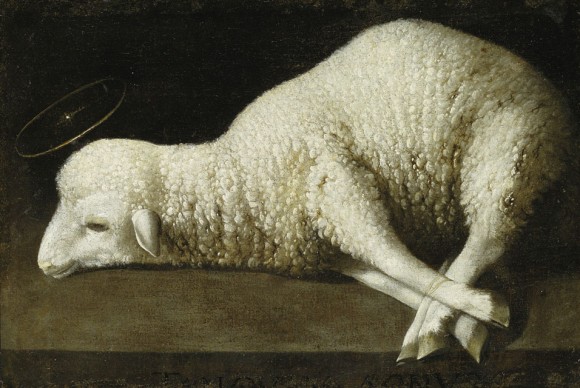“Francisco de Zurbarán: Master of Spain’s Golden Age” opens at Bozar in Brussels
February 2, 2014 by All Art News
Filed under Art Events & Exhibitions
BRUSSELS.- BOZAR celebrates the work of the Spanish Baroque painter by presenting an outstanding selection of 50 paintings. This unique survey of Francisco de Zurbarán’s oeuvre is a Belgian first.
Francisco de Zurbarán (1598–1664) is, alongside Velázquez and Murillo, one of the most important Baroque painters of Spain’s Golden Age. The last major international exhibition of his work took place back in 1988 at the Metropolitan Museum of Art (New York), the Louvre (Paris), and the Museo Nacional del Prado (Madrid). For the first time – exactly 350 years after his death – a retrospective of his art can now be seen in Belgium.
BOZAR and the Fondazione Ferrare Arte, in an exceptional collaborative project with the Museo Nacional del Prado (Madrid) and the Museo de Bellas Artes (Seville), have brought together some 50 outstanding paintings from the most prestigious collections. The exhibition includes such renowned works as the Prado’s Still Life with Four Vessels and the San Diego Museum’s Agnus Dei.

Francisco de Zurbarán Agnus dei ca. 1635-1640 Oil on canvas, 35,56 x 52, 07cm Inv. 1947.36 The San Diego Museum of Art, gift of Anne R. and Amy Putnam.
Four newly identified works by the artist are on display to the public for the first time (two of them are Appearance of the Virgen to Saint Peter Nolasco and Mystical Marriage of Saint Catherine) and six paintings have been especially restored for the occasion, among them the Saint Nicholas of Bari from the Monastery of Guadalupe, the Saint Gabriel the Archangel and the haunting Saint Francis.
The exhibition is organised thematically and chronologically and covers the key phases of the artist’s career. The public will be able to appreciate his oeuvre from his early works, which show a Caravaggesque influence and are characterized by dramatic lighting, to his late, more poetic and personal, paintings.
Zurbarán’s oeuvre is predominantly made up of works with religious subjects, such as scenes from the lives of saints, martyrs, and monks, often commissioned by churches and monastic orders. Like his patrons, he was strongly committed to the energetic Counter-reformation spirit of the Catholic Church. Painting, at that time, was seen as the reading matter of the uneducated believer; for that reason, it had to be clear, direct and inspiring.
Stylistically, he developed a unique visual language in which he combined pure naturalism with a modern poetic sensibility. As a result, his contemplative paintings strike us today as startlingly modern and timeless. Zurbaran’s work has been a source of inspiration for many contemporary artists and writers. Cees Nooteboom, for example, has written some splendid essays about his work, which have made the Spanish artist more widely known by the general public in Northern Europe.
As a multidisciplinary centre, BOZAR also makes connections with other arts: music (a concert cycle, The Intimate and the Sacred, and a CD, La Oreja de Zurbarán by the Huelgas Ensemble), cinema (Albert Serra), and contemporary art (Cristina Iglesias and Craigie Horsfield).
